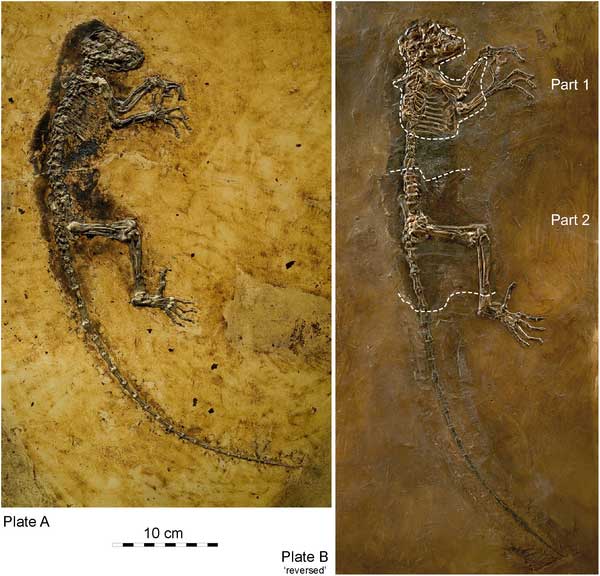Why 'Ida' Inspires Navel-Gazing at Our Ancestry

One long line of evidence that supports evolution is the ongoing discovery of "transitional" fossils that bridge the gap between one obvious kind of species and another. Nowhere are these transitional animals more interesting than when looking backwards through time at the human lineage. This week, scientists from the University of Oslo announced the discovery (or re-discovery since the fossil was dug up in 1983) of a 47-million-year-old female primate known as Ida. This almost complete female animal appears to represent the transition between what are often called "primitive" primates, such as lemurs and lorises (known as prosimians), and the more "lofty" monkey, apes and humans. And even more interesting, this transition was in place long before anyone realized. We love this stuff because humans are a self-interested species, and some of that navel-gazing has been directed toward our ancient past. Luckily for us, we have living examples of our history still with us today. Usually, the cycle of life involves repeated speciation, extinction, and survival of modified forms, so that what we see today is not anything like what came before. But as the human lineage went through a prosimian phase, then a monkey phase, then an ape phase over time, those branches didn’t completely die off. Instead, representatives of every historical stage can still be found in forests, savannahs, and zoos around the world. The ancient forms, of course, have been modified by natural selection during the millions of years they have survived, and their reign is not what it used to be. Prosimian primates were once found all across North America and Europe and now they have retreated to specialized niches in Africa (especially Madagascar) and Asia. Monkeys ruled the Earth 34 million years ago during the Oligocene, but now they mostly rule forests that cling to the equator. And during the Miocene, about 23 million years ago, apes were all over the place until they fell from grace leaving only four endangered species. That kind of ancestral mirroring is not so common. If, for example, we were modern horses, we wouldn’t be able to find decent representatives of the various stages of horse evolution galloping across a field. We'd have to deduce everything about our horsy past from the fossils that happened to be preserved and unearthed. But we humans have these living primate templates and so we know something about how the long line of our ancestors not only looked in the flesh, we also have an idea of how they behaved, ate, socialized and mated. And that's also why Ida is such a special find. She is seems to be covering the entire history of primate anatomical evolution all on her own. She was the size and build of modern lemurs but lacked the "tooth comb" that prosimians use to clear their fur, which makes her more like a monkey. Ida also had the flat face of monkey, and, oddly, she had the heel bone of a human. Ida seems to be cobbled together by evolution and looks like she could take off in any and all species directions. The mishmash of Ida's features is a reminder that although we have living examples of our past, the story might be more complicated than we think. Sometimes it takes an animal that was buried long ago, had the unusual experience of becoming a fossil, was unearthed in Germany in 1983, sold off in parts, put back together, and then presented as the biological Rosetta stone for the Primate Order to make us take another look, and revaluate, our past.
- All About Primates
- Video – Clever Primates
- Top 10 Missing Links
Meredith F. Small is an anthropologist at Cornell University. She is also the author of "Our Babies, Ourselves; How Biology and Culture Shape the Way We Parent" (link) and "The Culture of Our Discontent; Beyond the Medical Model of Mental Illness" (link). Her Human Nature column appears each Friday on LiveScience.
Get the world’s most fascinating discoveries delivered straight to your inbox.
 Live Science Plus
Live Science Plus





